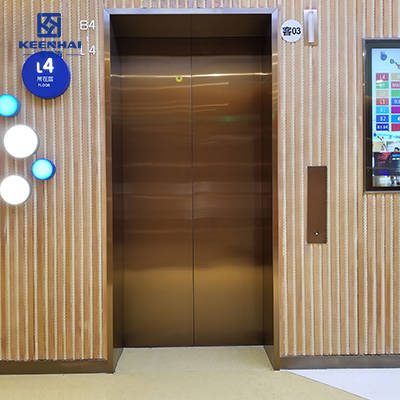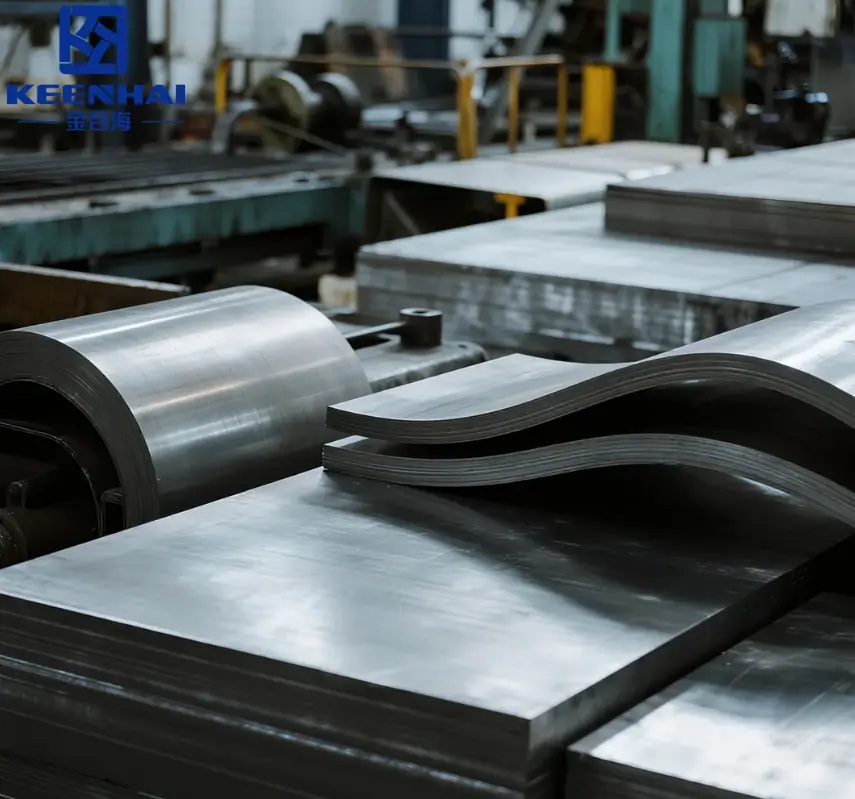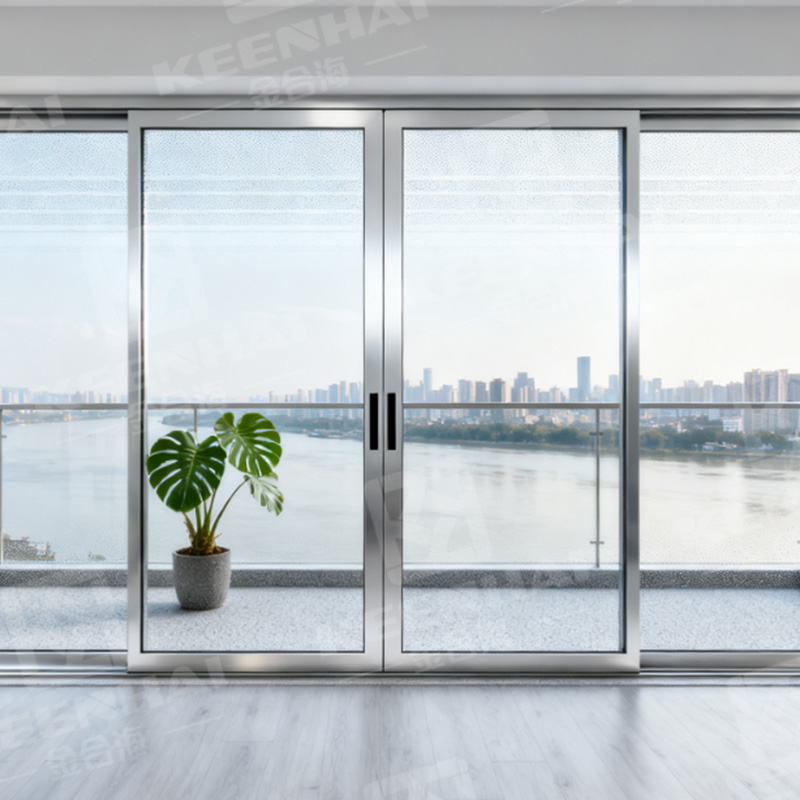For residential or boutique buildings, finishes like mirror-polished or custom-colored PVD offer elegance and long-lasting color retention. Brushed or etched finishes reduce maintenance frequency while providing texture and subtle aesthetics. Inspect material grade, corrosion resistance, and installation quality to protect your investment. Selecting the right finish balances cost, visual appeal, and longevity, delivering elevator doors that look pristine and operate reliably.
1. Understanding Elevator Door Finish Options
Choosing the right elevator door finish is about more than just looks — it’s about how the surface performs under real-world conditions. In commercial and residential environments, the finish you choose directly affects maintenance, durability, and the overall aesthetic tone of the space. For many designers, modern stainless steel elevator doors remain the first choice because they combine strength with timeless visual appeal.
1.1 Mirror, Brushed, and Etched Stainless Steel
Mirror, brushed, and etched finishes each bring a distinct character to an elevator entrance.
-
Mirror finishes are known for their high reflectivity, often used in hotel lobbies, luxury malls, and corporate headquarters where a sense of depth and prestige is desired. They create a bright, polished look that enhances lighting and gives smaller spaces an illusion of openness.
-
Brushed finishes are more subtle and practical. They reduce glare, hide fingerprints, and are common in office towers, hospitals, and public facilities where daily traffic is heavy.
-
Etched stainless steel, with custom patterns or textures, offers artistic flexibility — it’s often chosen by architects who want a tactile or brand-specific touch.
Here’s a quick performance comparison among these finishes:
| Finish Type | Appearance | Maintenance Level | Best Use Cases |
|---|---|---|---|
| Mirror | Highly reflective, luxurious | Korkea | Hotels, premium offices |
| Brushed | Soft matte, low glare | Matala | Hospitals, offices |
| Etched | Textured, customizable | Medium | Retail spaces, modern buildings |
Each option serves a distinct purpose — mirror for elegance, brushed for practicality, etched for uniqueness — and the right choice depends on how the space interacts with light, traffic, and design intent.
1.2 PVD Coated vs. Traditional Finishes
While traditional stainless finishes rely solely on mechanical polishing, PVD (Physical Vapor Deposition) technology introduces an advanced coating layer that enhances both color stability and corrosion resistance. PVD-coated surfaces can achieve shades from champagne gold to titanium black, offering both visual diversity and superior protection in humid or coastal environments.
In luxury properties or Ruostumattomasta teräksestä valmistettujen hissien sisäänkäynnit such as those in premium condominiums, PVD coatings are preferred because they don’t fade or peel even after years of exposure.
PVD coatings also contribute to sustainability — they produce no toxic waste and extend the lifespan of the ruostumattomasta teräksestä valmistettu tuote, which aligns with the values of environmentally responsible manufacturers like pvdstainlesssteel.
In short, if you’re designing for longevity, color consistency, and modern aesthetics, PVD finishes outperform traditional polishing methods on every practical level — from resistance to scratches to long-term brightness retention.
1.3 Custom Color and Texture Selections
Today’s architectural trends favor personalization. Designers can now specify custom textures, grain directions, or dual-tone effects for elevator doors to match interior concepts. For example:
-
Choose a color tone (gold, rose, or bronze) that complements wall panels or flooring materials.
-
Decide on a surface texture — from fine brushed lines to deep laser-etched patterns — that creates a distinctive tactile experience.
-
Coordinate door frame finishes with lighting design to balance reflection and warmth across the lobby.
In modern airports and corporate lobbies, PVD-coated brushed bronze finishes are gaining popularity because they deliver a warm, modern aesthetic while maintaining industrial durability.
Custom finish selection isn’t just about creativity — it’s about optimizing performance and brand identity through material science. With advanced stainless steel finishing technology, architects can now achieve both — artistry and endurance — in a single design choice.
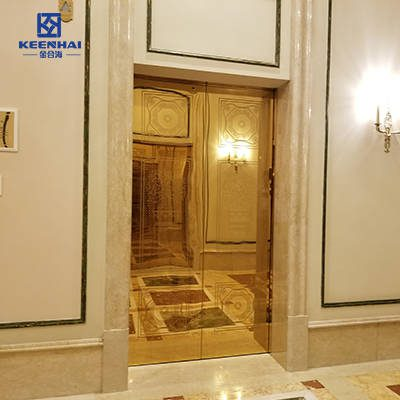
2. Matching Finishes with Building Type and Usage
Selecting the right elevator door finish depends on how the building is used and the traffic it experiences. Different finishes excel in different environments, balancing appearance, durability, and maintenance needs.
2.1 Commercial Buildings and High-Traffic Areas
In busy commercial spaces — airports, office towers, and metro stations — doors must withstand heavy daily use. Brushed stainless steel is ideal here because its soft matte surface hides fingerprints and minor scratches, maintaining a consistent look. Etched designs can also add texture and interest without compromising durability.
| Finish Type | Huolto | Traffic Resistance | Typical Use |
|---|---|---|---|
| Brushed | Matala | Korkea | Office towers, airports |
| Mirror | Korkea | Moderate | Executive floors, showrooms |
| Etched | Medium | Good | Lobbies, public areas |
For spaces like main lobbies with hundreds of daily visitors, finishes that require minimal upkeep ensure that the doors remain functional and visually appealing. Some architects opt for stainless steel elevator entrances to provide both strength and design flexibility.
2.2 Residential and Boutique Applications
Residential buildings and boutique offices focus more on aesthetics while still needing durability. Mirror or lightly brushed finishes complement wood, stone, or tile surfaces, creating a polished and welcoming atmosphere.
Designers often follow these steps when selecting finishes for smaller, controlled environments:
-
Assess the interior color scheme and style.
-
Consider the lighting to enhance either reflective or matte surfaces.
-
Evaluate daily cleaning needs to keep doors looking pristine.
In mid-rise residential buildings or luxury condominiums, subtle finishes provide elegance without demanding excessive maintenance. High-end stainless steel elevator doors are often chosen for their ability to maintain appearance over years of use.
2.3 Hospitality and Luxury Environments
Hotels, resorts, and premium retail spaces require elevator doors that reflect luxury and brand identity. Mirror-polished or PVD-coated doors in warm tones like gold or bronze often appear in lobbies to catch light and create visual depth.
Etched or textured patterns can differentiate guestroom floors, subtly guiding guests while maintaining a cohesive design. In these spaces, the focus is on combining aesthetic appeal with practical resistance to fingerprints, humidity, and cleaning agents.
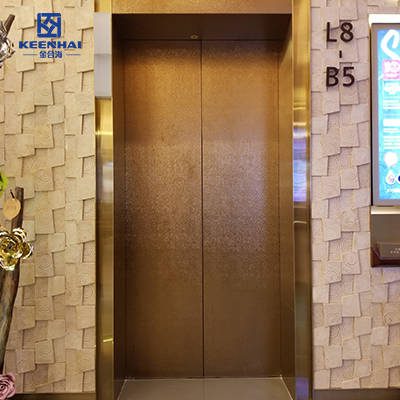
3. Durability and Aesthetic Performance
Choosing the right elevator door finish isn’t just about looks — it directly impacts how the doors hold up over time under real-world conditions. In high-traffic and luxury spaces alike, durability and aesthetics must work together to provide a lasting impression.
3.1 Scratch and Corrosion Resistance
Elevator doors in commercial lobbies, hospitals, or airport terminals endure constant contact. A brushed or PVD-coated finish can withstand repeated touches, luggage scrapes, and cleaning chemicals without showing visible wear. For instance, in a busy international airport, doors experience hundreds of daily contacts per elevator, yet high-quality stainless steel maintains both structural integrity and visual appeal over years.
Corrosion resistance is another critical factor, especially in humid or coastal locations. 304-luokan ruostumatonta terästä with PVD coatings resists rust and staining far better than traditional finishes, making it ideal for waterfront hotels or seaside office towers. Some manufacturers even offer enhanced finishes that maintain color and texture for over 10 years with minimal maintenance.
3.2 Long-Term Color Retention and Finish Integrity
Finishes like mirror-polished, brushed, or colored PVD are tested for color retention under continuous UV and indoor lighting. In a luxury hotel lobby, for example, gold-toned PVD elevator doors maintain their warm hue even after years of exposure to direct sunlight and fluorescent lobby lighting. Brushed finishes resist dulling, keeping a consistent matte sheen that complements surrounding materials like marble or wood paneling.
Architects often select finishes based on projected lifespan:
-
Mirror finish: visually striking but prone to scratches — ideal for areas with controlled access.
-
Brushed finish: subtle, hides fingerprints, perfect for public lobbies and residential buildings.
-
PVD-coated finish: maintains color and luster even in coastal or high-humidity environments.
3.3 Reflectivity and Visual Impact
The level of reflectivity affects both the aesthetic feel and perceived space size. In commercial skyscrapers, mirror-polished doors amplify natural light, making narrow corridors feel more open. In contrast, brushed or textured doors create a warm, understated look, reducing glare in office or healthcare facilities.
Consider a five-star hotel in a city center:
-
Mirror doors in the lobby catch the chandelier’s light, creating a sense of luxury.
-
Etched doors on guestroom floors subtly distinguish levels while maintaining cohesion with the lobby design.
This combination ensures that every door not only functions flawlessly but also supports the intended visual narrative of the space. Architects and designers often coordinate reflectivity levels with interior lighting plans to maximize both elegance and practicality.
3.4 Durability Comparison Table
| Finish Type | Scratch Resistance | Korroosionkestävyys | Ideal Traffic Level | Typical Applications |
|---|---|---|---|---|
| Mirror | Medium | Korkea | Low to Medium | Boutique hotels, executive offices |
| Brushed | Korkea | Korkea | Korkea | Airports, office towers, hospitals |
| Etched | Medium | Korkea | Medium | Retail centers, luxury lobbies |
| PVD-Coated | Korkea | Very High | Korkea | Waterfront buildings, luxury hotels |
4. Maintenance and Cleaning Considerations
Even the most durable elevator door finish requires proper maintenance to preserve its appearance and functionality. Regular cleaning routines and smart material choices ensure stainless steel elevator doors continue to look polished and operate smoothly in both high-traffic and luxury environments.
4.1 Daily Cleaning Practices
Daily cleaning is critical in commercial buildings, hospitals, and hotels where doors are touched hundreds of times per day. A simple, consistent routine prevents buildup of fingerprints, dust, and grime:
-
Use a microfiber cloth dampened with mild soap and water; avoid abrasive sponges that can scratch brushed or PVD finishes.
-
Wipe along the grain of brushed or textured surfaces to maintain uniform appearance.
-
Dry immediately to prevent water spots, especially on mirror-polished doors in hotel lobbies or executive floors.
For example, a corporate tower with 12 elevators and daily office traffic exceeding 1,500 people schedules a 5-minute cleaning per door twice daily, ensuring surfaces remain pristine without disrupting operations.
4.2 Periodic Maintenance Steps
Beyond daily cleaning, periodic maintenance preserves both aesthetics and mechanical performance:
-
Inspect hinges and tracks for wear and lubrication needs — especially in high-traffic areas like airports or metro stations.
-
Apply stainless steel polish on mirror or PVD surfaces every 2–3 months to restore shine and reinforce protective layers.
-
Check seals and edges for damage or corrosion, particularly in humid coastal environments.
Buildings with stainless steel elevator entrances often implement quarterly audits to address any minor wear before it becomes noticeable, maintaining both safety and visual quality.
4.3 Handling Stains and Corrosion Prevention
Even high-grade stainless steel can accumulate stains from environmental factors, cleaning chemicals, or accidental spills. Effective stain management includes:
-
Immediate spot cleaning using neutral pH cleaners or a mixture of water and vinegar for light mineral deposits.
-
Avoiding bleach or chloride-based cleaners, which can damage PVD coatings and reduce corrosion resistance.
-
Polishing lightly with a microfiber cloth to restore surface luster without scratching.
In a luxury hotel near the coast, the combination of high humidity and salt-laden air requires PVD-coated finishes on elevator doors, which retain color and resist corrosion far better than untreated surfaces. Routine cleaning and protective polishing extend the lifespan to over 10 years even under heavy use.
4.4 Maintenance Comparison Table
| Finish Type | Cleaning Frequency | Corrosion Sensitivity | Recommended Practices | Ideal Application |
|---|---|---|---|---|
| Brushed | Daily | Matala | Microfiber cloth, mild soap | Airports, office towers |
| Mirror | Daily | Medium | Non-abrasive polish, wipe along grain | Hotels, showrooms |
| Etched | Daily/Weekly | Medium | Gentle cleanser, spot treatment | Retail, lobbies |
| PVD-Coated | Daily | Matala | Soft cloth, polish 2–3 months | Coastal hotels, luxury buildings |
5. Cost and Installation Considerations
Selecting the right elevator door finish also involves understanding costs and installation requirements. A high-quality finish can reduce long-term maintenance expenses, while professional installation ensures stainless steel elevator doors perform reliably for years.
5.1 Material and Finish Costs
The cost of elevator doors varies depending on material, finish, and customization:
-
Brushed stainless steel remains the most cost-effective choice for high-traffic areas due to its durability and low maintenance needs.
-
Mirror finishes are more expensive because of labor-intensive polishing and higher susceptibility to visible wear if improperly handled.
-
PVD-coated or custom-color finishes carry a premium but deliver long-term color stability and corrosion resistance, making them ideal for coastal hotels or luxury lobbies.
For example, in a 10-story residential building with six elevators, upgrading to a PVD-coated finish might increase upfront costs by 20–30%, but significantly reduces polishing and repair requirements over a decade.
5.2 Installation Complexity and Best Practices
Proper installation is crucial for both aesthetics and mechanical reliability:
-
Precision alignment: Doors must be level and aligned with tracks to avoid operational issues and premature wear.
-
Seamless integration: Ensure finishes match surrounding panels, lighting, and interior design elements for a cohesive look.
-
Professional handling: High-end finishes like mirror-polished or PVD-coated surfaces require experienced installers to prevent scratches or coating damage during mounting.
Commercial projects often coordinate with manufacturers to schedule installation during low-traffic periods. For instance, a city-center office tower may install all stainless steel elevator entrances over a weekend, minimizing disruption while achieving perfect alignment and finish protection.
5.3 Cost vs. Long-Term Value
While initial investment varies, durable and well-installed finishes reduce long-term costs:
-
Lower maintenance frequency with PVD-coated or brushed finishes.
-
Extended lifespan even under heavy use in airports, hospitals, or hotels.
-
Enhanced aesthetic appeal, supporting brand perception and guest experience.
Many property managers find that choosing high-quality stainless steel elevator doors from trusted suppliers like pvdstainlesssteel balances upfront costs with longevity and visual impact, making it a smart investment for both functional and design considerations.
5.4 Final Recommendations
-
Match finish type to building usage and expected traffic.
-
Factor in maintenance, durability, and color retention when evaluating costs.
-
Work with experienced installers to protect the finish and ensure long-term performance.
-
Prioritize suppliers who provide both mukautusvaihtoehdot and technical guidance, guaranteeing the doors enhance the building’s overall aesthetic and operational quality.
By carefully weighing finish, installation, and maintenance factors, designers and building managers can select elevator doors that look great, last long, and maintain value over time, completing the vertical alignment between design intent and practical performance.

